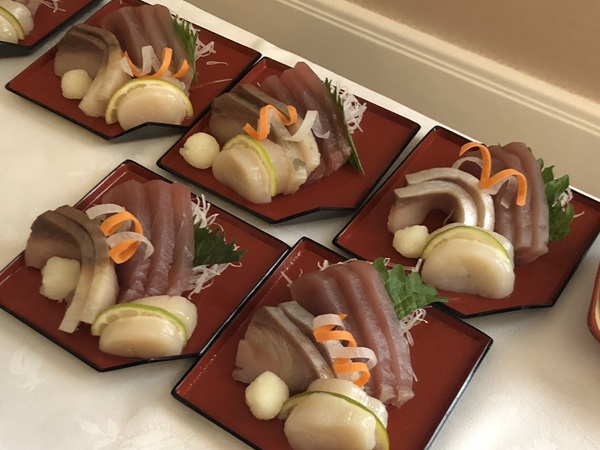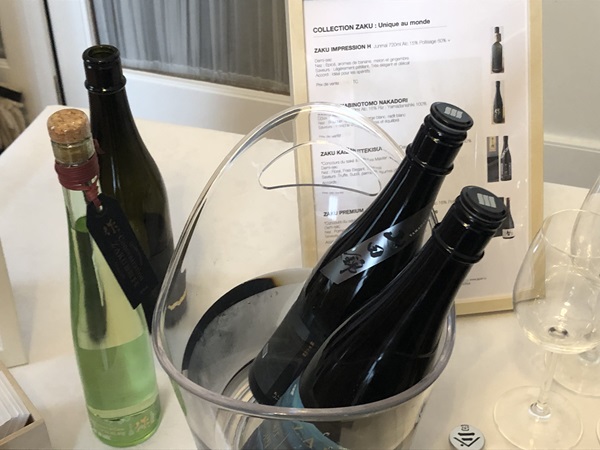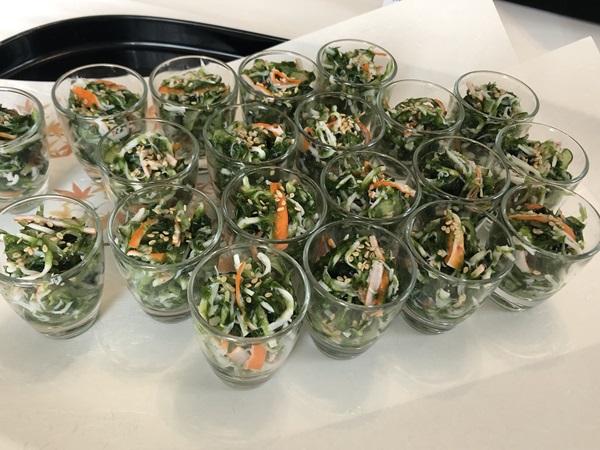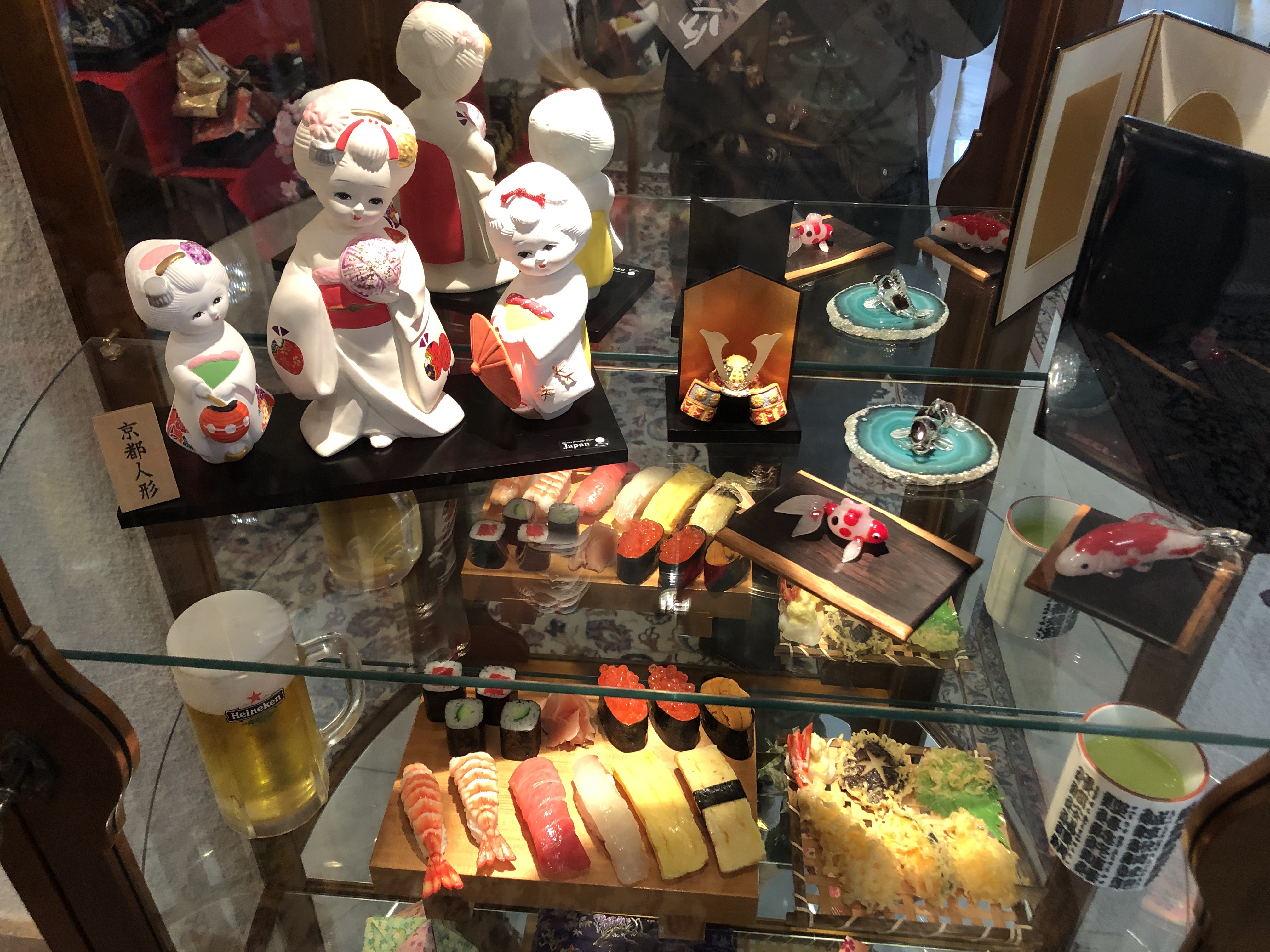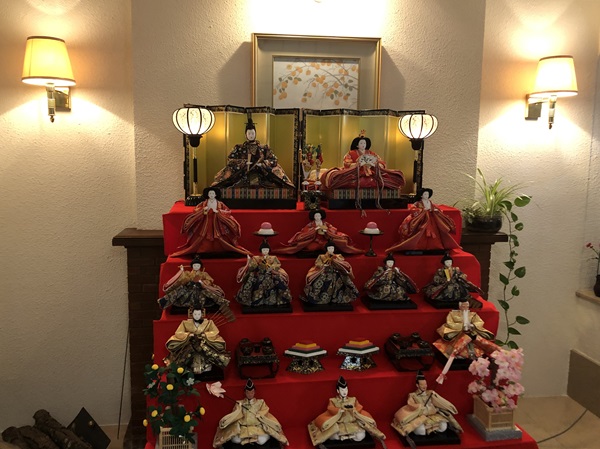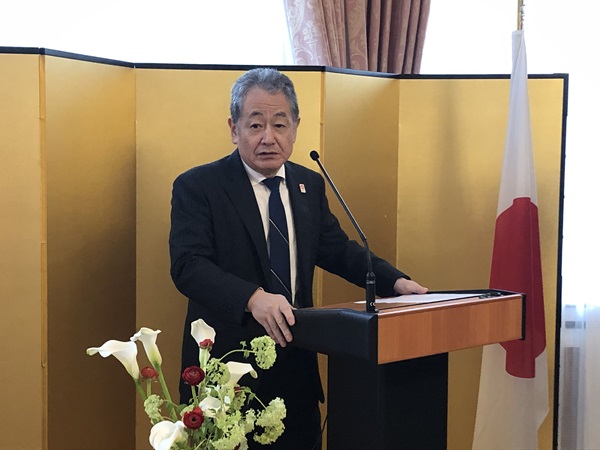 The Japanese Ambassador to Luxembourg, Tadahiro Matsubara;
Credit: Otilia Dragan/Chronicle.lu
The Japanese Ambassador to Luxembourg, Tadahiro Matsubara;
Credit: Otilia Dragan/Chronicle.lu
On Monday 19 February 2024, a Japanese sake and seafood tasting event took place at the Residence of the Japanese Ambassador to Luxembourg, in Strassen.
The Japanese Ambassador to Luxembourg, Tadahiro Matsubara, welcomed guests, noting that the embassy had hosted these on numerous occasions but that this was the first time the focus was on pairing the flavours and textures of various types of sake with traditional seafood.
Ambassador Tadahiro Matsubara also emphasised that he has been living in Luxembourg for fifteen months now and he has been discovering numerous good Japanese restaurants across the country, prompting him to believe that the Luxembourg population enjoys Japanese cuisine.
He added that imports from Japan have been growing consistently over the last five years, notably "reaching new heights each year". He emphasised that it is an “aspiration” to have traditional sake brewing be recognised by UNESCO. In 2022, Japan submitted an application for traditional Japanese sake brewing techniques to UNESCO’s Intangible Cultural Heritage. The UNESCO Committee’s deliberations are expected to take place during this year.
Furthermore, the Ambassador welcomed Harumi Hayashi of Sense of Japan, a Strassen-based specialty Japanese shop offering Japanese whisky and sake varieties. Ms Hayashi selected a variety of sakes and explained their characteristics and how to pair them with food – both traditionally Japanese and other local dishes.
The Ambassador conveyed his delight at the fact that the EU had approved the export of Japanese seafood, particularly from the Tōhoku region, which had been heavily damaged in the 2011 tsunami.
Chef Mitsuhashi prepared Japanese scallops (from the Hokkaido prefecture), yellowtail (from the Miyazaki prefecture) and bonito (from the Sanriku coast), in a variety of cooking methods, notably assorted sashimi, scallop sashimi, scallop carpaccio with yellowtail and also miso soup.
Sake is produced through fermentation and not distillation, making it a beverage similar to wine and yielding an alcohol percentage of 15-17%.
The primary classification criterion of sake is the degree of rice polishing. Sake rice grains are polished to remove the outer layers, which contain impurities and proteins that can affect the taste and aroma of the final product. The more polished the rice, the higher the grade of sake. Common classifications include Junmai, which is made from pure rice polished to at least 30% of its original size (with a light and fruity taste), and Ginjo, made from rice polished to at least 40% of its original size. Other classifications exist, each with its own unique characteristics and production methods. Sake can range from light and fruity profiles to dry varieties, and it can be paired with various (even European) dishes.
A display of traditional Japanese dolls was decorating the entry to the residence, symbolising the way of life taking place at the Palace. On 3 March, a holiday named Hina-matsuri, a rich display of dolls (hina-ningyo) is traditionally set up in Japanese households, for the good health and fortune of little girls in a family. A similar display is set up later in the year, on 5 May for little boys, with samurai dolls instead.


